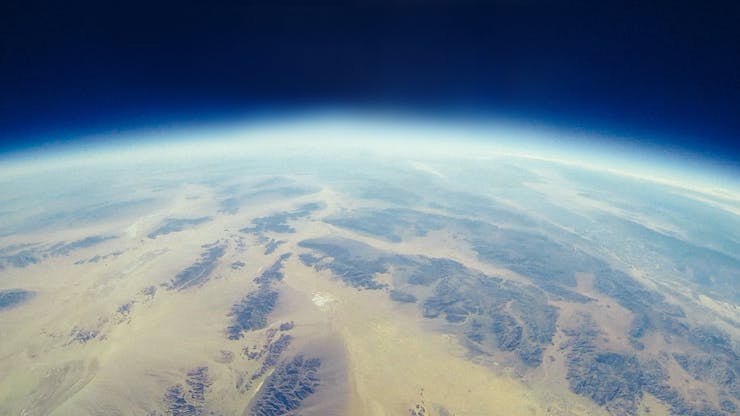NASA and China Competing for “Near Space” Drones

During the cold war in the late 1950’s, the United States of America and the Soviet Union began what was known as the Great Space Race. Both countries were competing to achieve greatness in the Next Frontier, outer space. The race went back and forth between the two giants, culminating with the US’s successful landing of the Apollo 11 on the moon on July 20th, 1969. Citizens of the world watched in awe as Niel Armstrong became the first human to walk on the moon followed Buzz Aldrin 20 minutes later. Since then NASA and the United States have run countless space missions, many in cooperation with the Soviet Union. Today NASA leads the world in space exploration, though there are many countries with their own space organizations. One of which is becoming the US’s newest space competitor, China.
While the Space Race was about conquering the outer limits of space, this next race will be to conquer “Near Space” with drones. Near Space is comprised of the stratosphere, mesosphere, and the lower thermosphere, 65,000 to 328,000 feet above sea level. These elevations create a difficult environment for drones to generate lift while the extreme low temperatures often tamper with electrical equipment. Near Space has gotten the nickname as a drone dead zone for these reasons. Under the direction of Professor Yang Yanchu of the Chinese Academy of Sciences, China has begun testing a new type of drone that can withstand the challenges of Near Space.
The drones they have designed are small and light weight, about the size of a bat. They are sleek with wings that streamline into the body allowing them to glide aerodynamically. Professor Yanchu began testing the drones at a research center in Mongolia. They attached two of the drones to a weather balloon. The balloon rose to 30,000 feet to deploy the first drone, then to 82,000 feet before deploying the second drone. The electromagnetic pulse that launched the drones from the balloon accelerated them from zero to 100km/h. Yanchu exclaimed, “It shot out like a bullet!”
Once free of the balloon the drones glided to their predetermined targets more than 100km away. The drones were able to autonomously correct their flight paths due to environmental forces. While they glided to their destinations, sensors on board transmitted data back to the ground crew. The sensors included an electromagnetic signal detector and a terrain mapping device, but no cameras as they would disturb the drones aerodynamics. While they have only tested the two drones so far, Yanchu said “The goal of our research is to launch hundreds of these drones in one shot, like letting loose a bee or ant colony.”
So what would be the purpose of a colony of drones being launched into Near Space? Well, the military implications are tremendous. Currently military organizations around the world rely on massive, expensive satellites in orbit to give them a picture of their enemies on the ground. They also use large military grade drones for these purposes. However, both the satellites and drones often become targets of enemy fire, putting defenses in a vulnerable position. The drones tested by Professor Yanchu are small enough to not be picked up by radar equipment, making them the perfect stealth spies. The sensors attached to them allow them to effectively pinpoint military troops. Being able to release a swarm of these drones would allow for the Chinese to spy on enemy troops in large, broad areas without detection. And, compared to the millions of dollars that a satellite or military drone will cost, these small portable drones will only cost a couple hundred yuan.
Meanwhile, the United States has been flying their own high altitude drone for similar purposes. Built by NASA the Helios Prototype has reached altitudes of 95,000 feet all on solar power. But again, the Helios is a large, extremely expensive drone that can easily be made an enemy target. It is safe to assume that right now scientists working for the US government are racing to compete against China to gain control of this final space frontier.
|